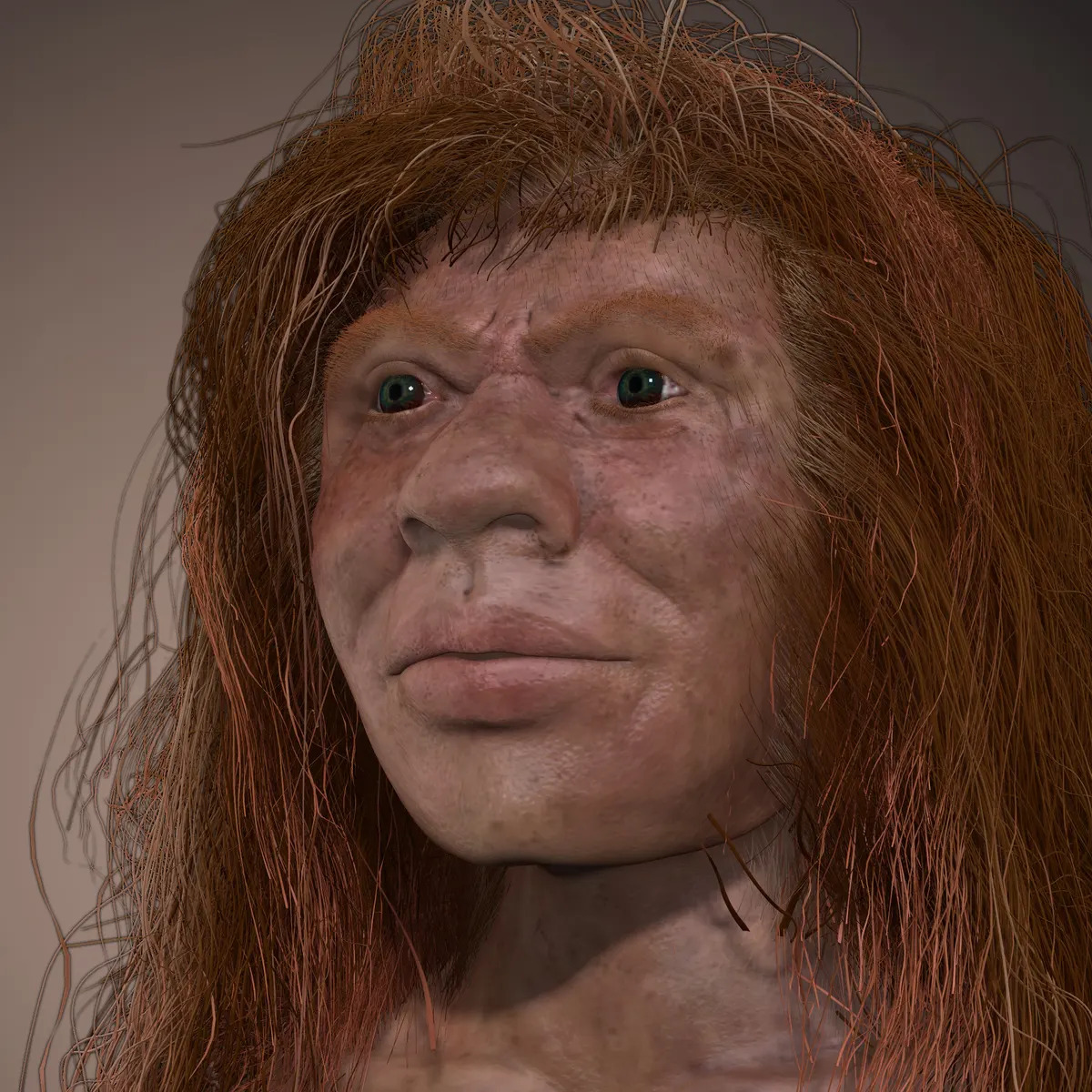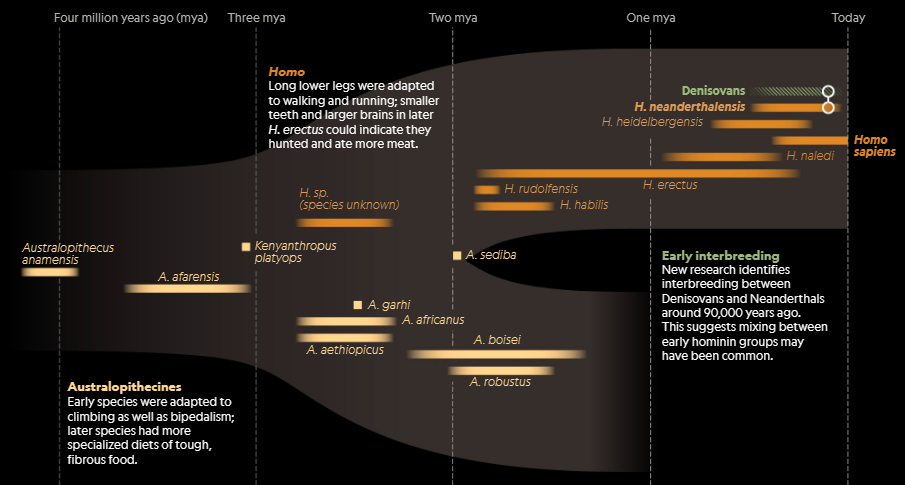The Only Person Born From Two Different Species
Discover how a unique person born from two different species—Neanderthals and Denisovans—unlocks mysteries of our ancient past and reshapes our understanding of human evolution.
Author:Dr. Felix ChaosphereReviewer:Xander OdditySep 15, 20237.2K Shares251.4K Views

We often marvel at the complexity of our origins, but none is more captivating than the story of an ancient child discovered in Siberia, believed to be the only known person born from two different species. Buried in the cold depths of the Altai Mountains, this child bridges our understanding between the Neanderthals and a lesser-known ancient species, the Denisovans.
A Person Born From Two Different Species Sheds Light On Denisovans
While Neanderthalshave always been in the public eye, Denisovans have largely remained enigmatic, known only through fragments of bone and teeth unearthed from the Denisova Cave in Siberia.
A recent project named Finder—Fossil Fingerprinting and Identification of New Denisovan Remains from Pleistocene Asia—has taken on the challenge to shed more light on this elusive species.
Project leader Katerina Douka, of the Max Planck Institute in Jena, Germany and a visitor at Oxford University, set the project's scope clear in 2018: “We aim to find out where they lived, when they came into contact with modern humans – and why they went extinct.”
Significance Of The Finder Project
Finder not only seeks to enrich our understanding of Denisovans but also aims to create a comprehensive database of archaic human remains across Asia. This database would serve as a monumental reference point for future anthropological research
The Needle In The Haystack
Faced with the task of identifying bone fragments often chewed up by hyenas and other animals, the research team led by Douka and Tom Higham of Oxford University’s Radiocarbon Accelerator Unit, turned to innovative technology. They used Zooarchaeology by mass spectrometry, leveraging the unique forms of collagen present in major mammal groups for faster identification.
Among thousands of bones analyzed, one was human but undetermined in its specific species. This bone fragment was sent to Svante Pääbo at the Max Planck Institute for Evolutionary Anthropologyin Leipzig for a more detailed analysis. They found the individual was at least 13 years old at the time of death. Pääbo was stunned when further tests revealed that exactly half of the DNA sample was Neanderthal and the other half was Denisovan.
Technological Advancements In DNA Sequencing
It's noteworthy that the technology used in DNA sequencinghas made leaps and bounds in the past decade, enabling researchers to extract high-quality DNA from even poorly preserved samples. This allows for a more nuanced exploration of our evolutionary history, offering insights into aspects like disease resistance and adaptation to different environments.
Neanderthals (Homo neanderthalensis) were skilled hunters and tool-makers who inhabited Europe and Western Asia until roughly 30,000 years ago. They survived in diverse ecological conditions and endured three glaciations.
On the other hand, little is known about the Denisovans (Homo sapiens denisova), whose existence is mostly evidenced by tiny bone fragments discovered in Denisova Cave in Siberia. Neanderthals, Denisovans, and modern humans all diverged from a common ancestor more than 400,000 years ago.
Cultural Practices Of Denisovans
While little is known about the culture of the Denisovans, some researchers speculate that they might have had advanced tool-making capabilities, comparable to those of modern humans and Neanderthals. Ongoing excavations at the site are attempting to uncover artifacts that might give a clearer picture of their lifestyle and social structures.
Analysis of a bone fragment revealed that Denisova 11, the girl in question, was at least 13 years old when she died, over 50,000 years ago. While the cause of her death and lifestyle remain a mystery, advanced DNA sequencing techniques revealed that her genetic makeup could only be explained if she had a Neanderthal mother and a Denisovan father.
The Neanderthals and Denisovans were replaced by modern humans about 40,000 years ago. Intriguingly, DNA analysis of Denisova 11 suggests substantial migration of Neanderthal groups between Western Europe and Eastern Asia. Contrary to the previously held belief that Neanderthals were not inclined towards long-distance movement, Denisova 11 was found to have DNA more closely related to Neanderthals from Western Europe than to those from her home cave in Siberia. This potentially revises our understanding of Neanderthal migratory behavior.
Broader Implications
The identification of Denisova 11 has also triggered a renewed interest in palaeoanthropology, especially in the broader academic community. Schools are incorporating this groundbreaking discovery into their curricula to inspire the next generation of researchers.
“If you had asked me beforehand, I would have said we will never find this, it is like finding a needle in a haystack,” Pääbo commented.
For a visual perspective, artist John Bavaro presented his interpretation of the child, nicknamed Denny.
According to Bavaro, "By taking a genome analysis from the specimen’s mitochondrial DNA on a single bone fragment recovered from the Denisova Cave in the Altai Mountains of Russia, palaeogeneticists Viviane Slon and Svante Pääbo of the Max Planck Institute for Evolutionary found that she had 40 percent Denisovan genes from her dad and 40 percent Neanderthal genes from her mom."
Public Reception And Further Study
The discovery has received widespread media coverage, not just in scientific journals but also in popular magazines and documentaries. This has not only increased public interest in human evolution but has also ignited debates around the ethical implications of DNA analysis and cloning.
Plans for further studies are underway, with an emphasis on identifying the sociocultural interactions between these archaic human species.
The team's groundbreaking discovery was published in Nature in 2018. They stated, “Neanderthals and Denisovans are extinct groups of hominins that separated from each other more than 390,000 years ago.”
They elaborated on the uniqueness of the bone fragment, “The father, whose genome bears traces of Neanderthal ancestry, came from a population related to a later Denisovan found in the cave.” The team also noted, “The mother came from a population more closely related to Neanderthals who lived later in Europe than to an earlier Neanderthal found in Denisova Cave, suggesting that migrations of Neanderthals between eastern and western Eurasia occurred sometime after 120,000 years ago.”
International Collaboration
Researchers from around the world have expressed interest in the Finder project, and several international collaborations are in the pipeline. These will focus on the role of climate change in the extinction of these species, as well as the exchange of technologies and practices between these ancient human species and modern humans.
This discovery not only changes our understanding of our ancient relatives but also suggests a more interconnected world among Late Pleistocene hominins. As summed up by the researchers, “The finding of a first-generation Neanderthal–Denisovan offspring among the small number of archaic specimens sequenced to date suggests that mixing between Late Pleistocene hominin groups was common when they met.”
It's a jaw-dropping revelation that paves the way for more questions than answers, further intriguing those who seek to understand the complexity of human evolution.
FAQs
What Does Hybrid Offspring Mean In The Context Of Ancient Human Species?
Hybrid Offspring refers to the result of a reproductive union between two different species or subspecies. In the case of Denisova 11, the young girl discovered in Siberia, she was the hybrid offspring of a Neanderthal mother and a Denisovan father.
Can You Elaborate On Genetic Mixture Found In Ancient Hominins?
Genetic Mixture pertains to the varied genetic makeup in an individual resulting from interbreeding between different species or groups. When different groups or species mate and produce offspring, their genes mix, leading to a unique combination of genetic material in the child.
How Do Ancestral Roots Play A Role In Understanding Hybrid Offspring?
Ancestral Roots provide insight into the lineage and origins of an individual or species. By studying the ancestral roots of a hybrid individual, scientists can better understand the migration, interaction, and interbreeding patterns of ancient human species.
Were There Any Discoveries Of Hominin Hybrids Outside Of Siberia?
While the discovery of the girl in Siberia was groundbreaking, researchers are continuously exploring various regions to find evidence of hominin hybrids. It's believed that wherever different hominin species overlapped in time and space, there might be potential for such unions.
How Does Genetic Lineage Offer Clues About Hybrid Offspring?
Genetic Lineage is like a roadmap of an individual's genetic history. For hybrid individuals, their genetic lineage can reveal the distinct contributions from each parent species, helping researchers understand more about the mating dynamics and interactions between different ancient species.
What's The Role Of Interspecies Breeding In Evolution?
Interspecies Breeding, or the mating between two different species, can lead to new genetic combinations and potentially beneficial traits for survival. This genetic diversity can enhance adaptability and resilience in changing environments, playing a crucial role in the evolutionary journey of a species.
Conclusion
The intriguing topic of hybrid offspring—particularly a person born from two different species—opens up a wealth of questions about our past, our ancestry, and the complexities of human evolution. As we delve deeper into understanding our ancestral roots, genetic mixture, and genetic lineage, we get closer to grasping how interspecies breeding has shaped who we are today.
Discoveries like the girl in Siberia prove that ancient human species were more interconnected than we ever imagined, giving us valuable insights into how hybridization might have played a crucial role in human evolution.
Studying these extraordinary examples helps us broaden our understanding of our own history, and possibly, our future. Whether it's in Siberia or another part of the world, the ongoing search for evidence of hominin hybrids and the mysteries they reveal remain a fascinating and evolving field of research.
Jump to

Dr. Felix Chaosphere
Author
Dr. Felix Chaosphere, a renowned and eccentric psychiatrist, is a master of unraveling the complexities of the human mind. With his wild and untamed hair, he embodies the essence of a brilliant but unconventional thinker. As a sexologist, he fearlessly delves into the depths of human desire and intimacy, unearthing hidden truths and challenging societal norms.
Beyond his professional expertise, Dr. Chaosphere is also a celebrated author, renowned for his provocative and thought-provoking literary works. His written words mirror the enigmatic nature of his persona, inviting readers to explore the labyrinthine corridors of the human psyche.
With his indomitable spirit and insatiable curiosity, Dr. Chaosphere continues to push boundaries, challenging society's preconceived notions and inspiring others to embrace their own inner tumult.

Xander Oddity
Reviewer
Xander Oddity, an eccentric and intrepid news reporter, is a master of unearthing the strange and bizarre. With an insatiable curiosity for the unconventional, Xander ventures into the depths of the unknown, fearlessly pursuing stories that defy conventional explanation. Armed with a vast reservoir of knowledge and experience in the realm of conspiracies, Xander is a seasoned investigator of the extraordinary.
Throughout his illustrious career, Xander has built a reputation for delving into the shadows of secrecy and unraveling the enigmatic. With an unyielding determination and an unwavering belief in the power of the bizarre, Xander strives to shed light on the unexplained and challenge the boundaries of conventional wisdom. In his pursuit of the truth, Xander continues to inspire others to question the world around them and embrace the unexpected.
Latest Articles
Popular Articles

